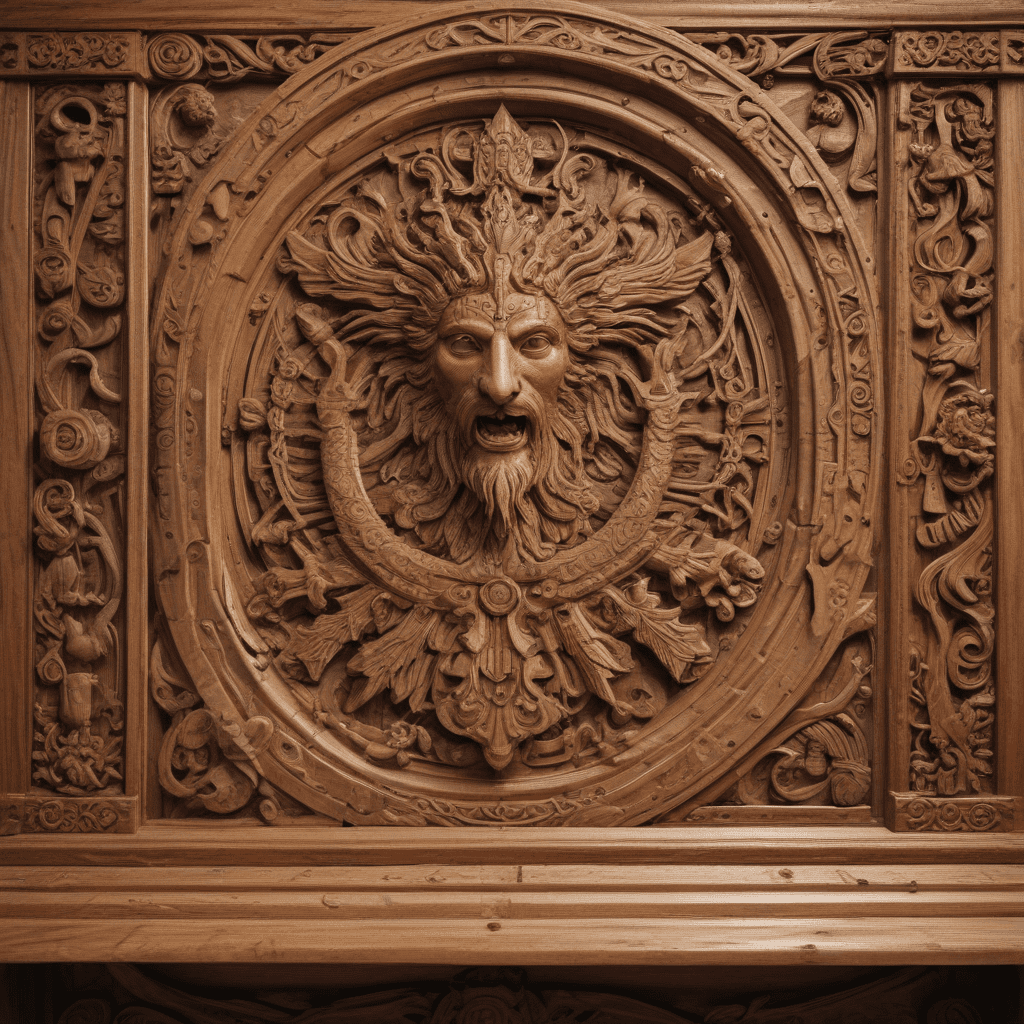Introduction: Slavic Mythology and its Significance
Slavic mythology, a rich tapestry woven with ancient beliefs, rituals, and legends, holds a profound place in the cultural heritage of Slavic nations. Among its many facets, the art of woodworking and carpentry played a central role, shaping the physical and spiritual landscape of Slavic societies.
The Importance of Wood in Slavic Culture and Folklore
Wood was a fundamental element in Slavic life, serving practical and symbolic purposes. Forests, revered as sacred groves, provided sustenance, shelter, and fuel. In folklore, trees were believed to possess spirits and were often associated with deities and mythical beings.
Woodworking as a Sacred Craft in Slavic Society
In Slavic culture, woodworking was not merely a craft but a sacred art. Master carpenters were highly respected and considered intermediaries between the human and divine realms. Their skills were passed down through generations, preserving centuries-old techniques and designs.
Master Carpenters and their Myths and Legends
Slavic mythology is replete with stories of master carpenters, often imbued with extraordinary abilities and magical powers. One such figure is Leshy, the forest spirit, who protects the woods and is said to possess exceptional woodworking skills.
Traditional Slavic Woodworking Tools and Techniques
Traditional Slavic woodworking relied on a range of tools, including axes, saws, adzes, and chisels. Carpenters employed various techniques, such as mortise and tenon joints, to create sturdy and intricate structures.
Symbolic Motifs and Patterns in Slavic Wood Carvings
славянской резьбы по деревуSymbolic motifs and patterns feature prominently in Slavic wood carvings, each carrying cultural and spiritual significance. Geometric designs, such as circles and triangles, represent the sun, earth, and divine protection. Floral and animal motifs symbolize fertility, abundance, and the connection to nature.
The Use of Wood in Slavic Rituals and Ceremonies
Wood played a vital role in Slavic rituals and ceremonies. Carved idols and amulets were used to invoke deities and ward off evil spirits. Wooden vessels were employed for sacred libations and offerings. Wedding ceremonies often involved the exchange of wooden spoons, symbolizing the couple's unity and shared life.
Wooden Structures in Slavic Settlements
Slavic settlements were characterized by wooden structures, including houses, barns, and churches. These structures were often adorned with elaborate carvings, depicting scenes from mythology, history, and everyday life. Wooden fortifications, such as palisades and towers, provided defense against enemies.
Contemporary Influences and Adaptations in Slavic Woodworking
While traditional Slavic woodworking techniques continue to be practiced, contemporary influences have also shaped the craft. Modern tools and materials have allowed for greater precision and artistic expression. Slavic woodworkers today incorporate traditional motifs into contemporary designs, creating unique and innovative pieces.
The Art of Woodworking: Preserving Slavic Cultural Legacy
The art of woodworking has played an integral role in preserving Slavic cultural legacy. Through the centuries, master carpenters have passed down their skills and knowledge, ensuring the continuity of traditional techniques and designs. Slavic woodworking continues to thrive, representing a living testament to the rich cultural heritage of Slavic nations.
FAQs
Q: What is the significance of wood in Slavic mythology?
A: Wood was revered as a sacred element, associated with deities, spirits, and the cycle of life and death.
Q: Who were the master carpenters in Slavic society?
A: Master carpenters were highly respected individuals, believed to possess magical powers and a connection to the divine.
Q: What are some common motifs found in Slavic wood carvings?
A: Geometric designs, floral and animal motifs, and scenes from mythology and everyday life are frequently depicted in Slavic wood carvings.
Q: How was wood used in Slavic rituals and ceremonies?
A: Wood was employed for carved idols, amulets, sacred vessels, and wedding spoons, playing a vital role in invoking deities, warding off evil, and celebrating important milestones.
Q: What is the state of Slavic woodworking today?
A: Slavic woodworking continues to be practiced, with contemporary influences shaping the craft. Traditional techniques and motifs are incorporated into innovative designs, preserving the cultural legacy of Slavic nations.



